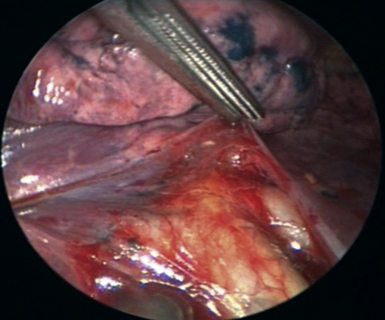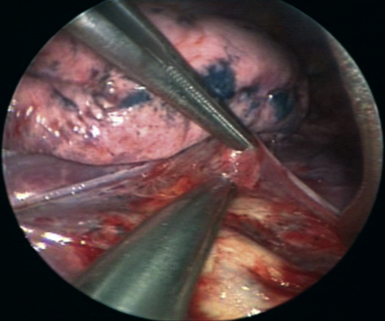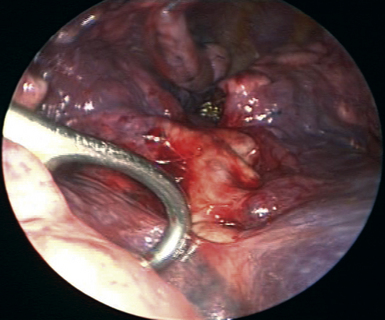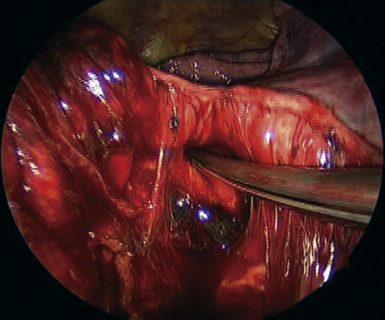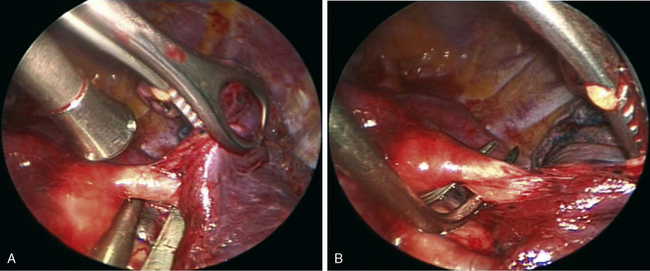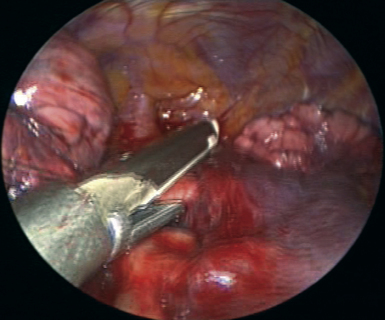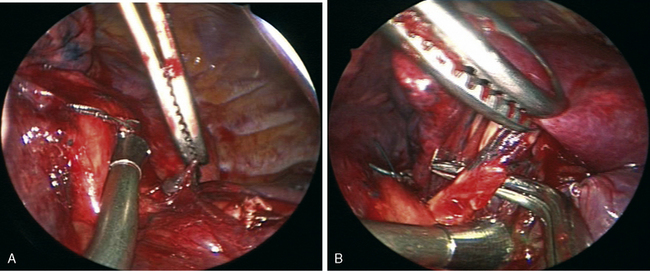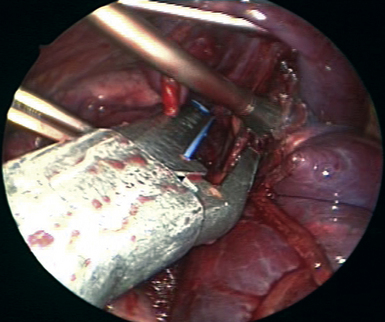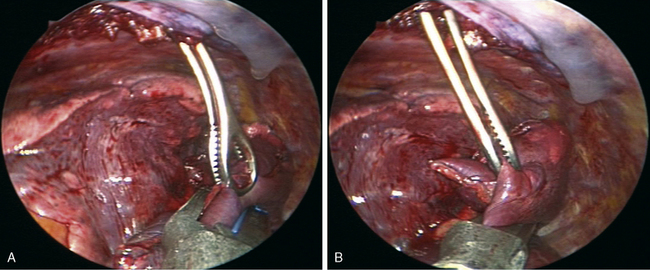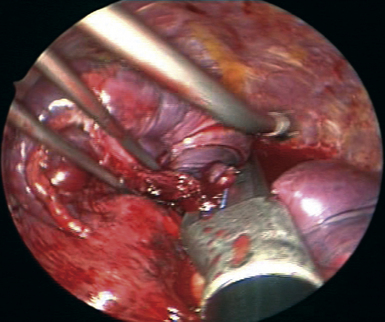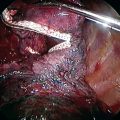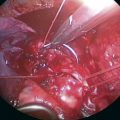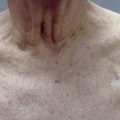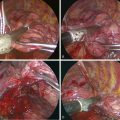CHAPTER 18 Superior Segmentectomy—Video 18
Introduction
The approach to a superior segmentectomy varies with the completeness of the fissure. If the fissure is complete, I prefer an anterior approach because the artery can be easily visualized in the fissure. If the fissure is incomplete, the entire fissure can be completed (as for a lower lobectomy [see Chapter 11]) so the anterior to posterior approach can be performed. Alternatively, the segmentectomy can be approached posteriorly.
 Anterior Approach for Superior Segmentectomy (Video 18)
Anterior Approach for Superior Segmentectomy (Video 18)
Step 1. Identifying the Artery in a Major Fissure: Complete Fissure
• Elevate the lower lobe with a ring forceps introduced posteriorly, and elevate the middle lobe or upper lobe (or both) with a ring forceps introduced anteriorly. If the fissure is complete, open the pleura with Metzenbaum scissors or electrocautery through the anterior incision to identify the artery (Figure 18-1).
• Through the lower anterior incision, dissect on the surface of the artery with Metzenbaum scissors. This creates a tunnel for the stapler to complete the fissure (Figure 18-2).
• Place the anvil of the stapler on the surface of the artery; it is not moved because ring forceps anteriorly and posteriorly pull the lung parenchyma of the fissure into the stapler.
• Directly below the fissure, continue to dissect with the Metzenbaum scissors beyond the superior segmental artery (Figure 18-4). The bronchus can be felt with the scissors. Continue this dissection through the posterior pleura to complete the remainder of the fissure.
Step 3. Superior Segmental Artery
• Through the anterior incision, use Metzenbaum scissors and DeBakey pickups to dissect the superior segmental artery (Figure 18-5).
Step 4. Superior Segmental Bronchus
• If the fissure has not been completed, dissect along the superior aspect of the bronchus with the Metzenbaum scissors introduced through the inferior incision. Push with the scissors posteriorly. Except the spine, there is no significant structure posteriorly. After the tunnel is complete, staple the remainder of the fissure with a stapler through the anteroinferior incision. Place the anvil of the stapler in the tunnel and line up the cartridge with the fissure (Figure 18-7).
Step 6. Separating the Superior Segment
• Pass the stapler through the anteroinferior incision. Place the anvil of the stapler just above the artery. Pull the superior segment superiorly with a ring forceps through the anterior incision (Figure 18-9).
• Occasionally, there is a small fissure between the superior segment and the basilar segments, which helps with identifying the proper location for the separation of the superior segment from the basilar segments. If not, place the stapler to provide adequate margins away from the tumor in the segment. Subsequently, place the stapler so that the anvil of the stapler is positioned in front of the artery to avoid compromising it (Figure 18-10).

